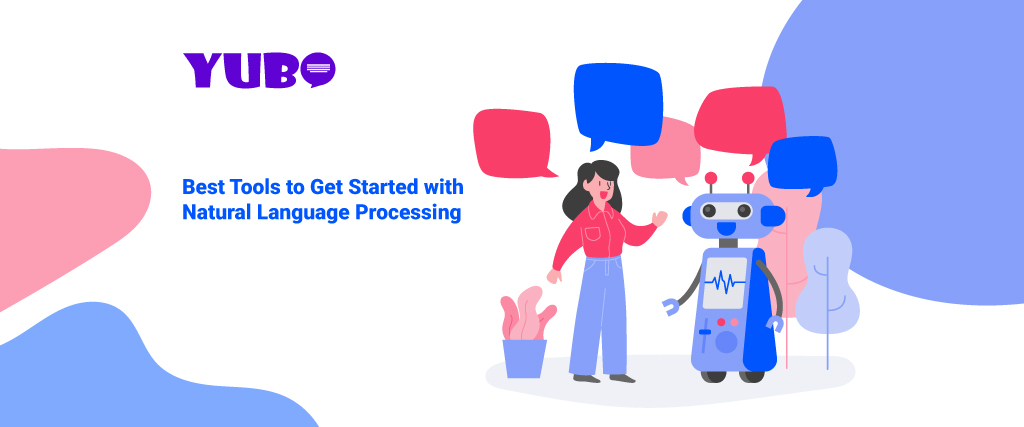Natural Language Processing Tools: In recent times, most people would agree to have had a conversation with a chatbot or a voice assistant at least once.
This is pertaining to the increasing popularity of these tools with the help of Natural Language Programming (NLP). To understand what NLP is or what it does, one has to understand the reason for its need.
With the increase of the conversations on the internet for personal and professional reasons, there is a huge amount of information accumulation in the form of data. This data is very useful for companies as they can use it to better understand and predict client behavior.
However, it is very time-consuming for humans to organize this data and draw inference from it, and computers cannot understand the complexity of human language and conversations.
Natural Language Processing Tools, This is where NLP steps in as a sort of middle-man to decipher and interpret this data to great extent. Most organizations use NPL as a way to both communicate with their clients as well as interpret that data.
NLP is often confused with ML (Machine Learning) but they are not the same concept. It can be defined as the understanding of natural language by machines with the use of computational methods.
Natural Language Processing Tools – Problems faced in NLP
Natural language used in conversations is usually fairly simple for us humans, but for computers, it is really difficult to comprehend.
That is why, in spite of the fact that NLP in the current times is pretty efficient, people using it face a no. of problems. Most of these problems stem from the inherent anomalies in human language that are easily understood and/or ignored by us.
- Ambiguity
Context plays an important part in our conversations. The same word can have a totally different meaning when put in a different context.
For example, the word present means the current period of time when used in terms of tense. However, it means a gift given to someone when used as in that context.
- Coreference
Sometimes when in conversation, we tend to omit certain aspects because they have been referenced before and are simply understood by us. This is called coreference and is a major challenge for NLP.
- Synonyms
In natural conversations, we use synonyms which are words that share the same meaning. For example, pretty and attractive both refer to the same quality of beauty and hence, are in a way synonym.
Tools to get started
If you’re trying to start working with NLP and facing challenges, fret not. There is an option of using SaaS (Software as a Service) or making a personalized tool.
With sufficient money and resources, you can even create your own tool using open-source libraries. These are some of the best and most efficient tools available for natural language processing.
- Natural Language Toolkit (NLTK)
The natural language toolkit is a leading python-based tool. It encompasses a number of features and is mainly used for towards research and model building in NLP.
The NLTK library is mostly string-based. That means its input and return are totally in the form of string type. It can be used for a no. of purposes including stemming, tokenization, semantic reasoning, and classification.
The library is considered slightly difficult to understand but once you get used to it, it’s great for NLP experience. Overall, NLT is a very well-rounded tool with a robust community and plenty of available tutorials, datasets, and resources.
- MonkeyLearn
MonkeyLearn analyses text data to present it in a comprehensible form for the user. Initially, you can work on it with topic classification, keyword extraction, and sentiment analysis.
It also allows users to create customized tools based on their own needs for better insights. MonkeyLearn Studio is a multi-use platform that allows users to process and look over the data and also prepare diagrammatic representations for it at the same place. It also provides suitable custom-designed templates for your business.
- Spacy
Spacy is similar to NLTK in certain ways and probably its main competitor. It is faster in most cases and also, it represents everything as an object rather than a string, which makes it easier for the interface to build applications.
This also helps it integrate with other frameworks and NLP tools, so once you have a better understanding of text data, you can do much more with it. Most sources site that Spacy only supports English, which is not true.
It also has a simple interface and an easy set of choices. On the whole, it is an amazing tool and serves the best available option for each task.
- TextBlob
TextBlob can be called an extension of NLTK, as it allows you to perform the same NLTP tasks in a more simplified manner. It includes functionality from the pattern library.
It is comparatively easier to understand and highly recommended for novice users. However, people tend to use TextBlob for smaller projects. It is capable of performing most NLP functions including stemming, classification, sentiment analysis, etc.
- Natural
Natural is mostly focused on English, but some other languages have been contributed, and the community is open to additional contributions. It includes most functions in the NLP library.
It supports tokenizing, stemming, classification, phonetics, term frequency, WordNet, string similarity, and some inflections. Similar to NLTK, it tries to provide all functions in a single platform. It is fairly easy to use and is used for varied purposes.
Even though it is a fairly developed tool, Natural requires proper knowledge and sometimes additional input to be fully effective.
- Google Cloud
The Google Cloud Natural Language API acts as an NLP tool. It also provides the most NLP functions available with other tools.
Along with it, AutoML Natural Language is also offered, which allows building customized machine learning models. As part of the Google Cloud infrastructure, it uses Google’s question-answering and language understanding technology.
- Open NLP
OpenNLP is a tool based on Java. It is easy to integrate with Apache projects such as Apache Flink, Apache Spark, and Apache Nifi.
It comprises all the common processing elements of NLP. It can be used from the command line as well as the library and supports a wide range of languages.
- Stanford Core NLP
Stanford CoreNLP is actually a set of tools. It provides a number of services such as statistical NLP, deep learning NLP, and rule-based NLP functionality.
Several other programming language restrictions have been developed so that this tool can be used outside of Java. The reason for this being that it is an extremely powerful tool.
However, it is also used on small scale projects. Created by one of the most elite organizations, this tool has a dual license system with a special commercial license.
This tool proves great for research-related purposes but not so much for the production system. The Python version interests people more than the Java version.
- Aylien
Aylien is a SaaS API tool that uses deep learning and NLP to interpret large volumes of text-based data. For example, academic publications, real-time content from news outlets, and social media data.
You can use it for NLP tasks like text summarization, article extraction, entity extraction, and sentiment analysis, etc.
- Amazon Comprehend
Amazon Comprehend is an NLP tool, integrated with the Amazon Web Services infrastructure. This tool too can be used for most functions available in the NPL library.
It even has a special healthcare version: the Amazon Comprehend Medical, which is an advanced tool used to analyze complex and sensitive medical data for better results.
Read More: Top 10 Real-Life Applications of Natural Language Processing







